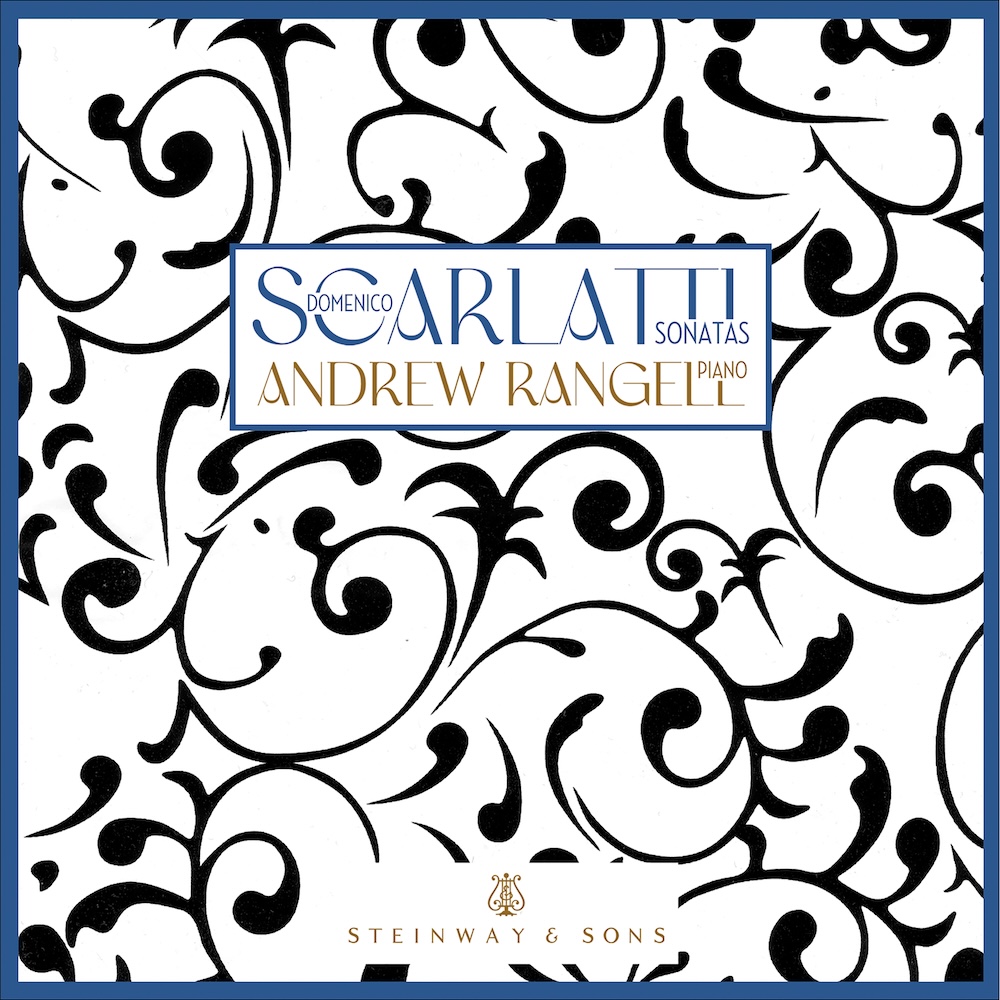Domenico Scarlatti
Sonatas
Andrew Rangell
Pianist Andrew Rangell is an artist of uncommon insight. On his latest Steinway & Sons release, he highlights the brilliant individuality of Domenico Scarlatti’s keyboards sonatas.

On January 3, 2025 Steinway & Sons releases Domenico Scarlatti: Sonatas / Andrew Rangell (STNS 30248). As Mr. Rangell writes in his program notes:
In Madrid (1733) Domenico Scarlatti, a respected, Italian-born choral composer and harpsichordist is employed by Spanish royalty as music-master to the Court. Scarlatti is 48 years old. He will devote the remaining 25 years of his life to an altogether new creative enterprise: bringing into existence, year by year, some 550 single-movement keyboard sonatas, audaciously original in style and concept. It is this rich trove upon which Scarlatti's present reputation rests. And there is evidence that as many as half of these sonatas come from the last five years of his life! The composer's late-life swerve and "born-again" compositional career is a singular instance of an artist's long deferred discovery of his true voice, métier, and inspiration. In this case, all deeply rooted in Spain.
Briefly, Scarlatti's story is this: He was born in Naples in 1685 (famously sharing that birth-year with Bach and Handel). His illustrious father Alessandro, among the foremost choral composers of the Italian Baroque, exerted a profound influence on Domenico, a prodigious talent and already a professional organist/composer in Naples by age 16. In his 20's Domenico established a reputation as a harpsichord virtuoso in Rome while employed as a composer of opera, oratorio, chamber cantatas and other vocal works. His professional life changed in 1719 as he was named music instructor to the Portuguese Princess Maria Barbara (who eventually, in 1746, became Queen of Spain). She was, by all accounts, an unusually gifted musician and harpsichordist. There can be little doubt that this woman's loyalty and encouragement, over some three decades, would be indispensable to Scarlatti's inspired efforts, as she witnessed the creation of hundreds of his sonatas (probably playing many of them).
We have no autograph manuscript of any Scarlatti sonata. At an early stage in their production, Scarlatti (at age 53, in 1738) chose 30 sonatas for publication, labelling them "Essercizi" (Exercises) and referring to them in his written preface as representing "An Ingenious Jesting with Art". No further sonatas received publication by Scarlatti. However, hundreds of them were privately copied out, in 13 volumes, for Maria Barbara during the last five years of Scarlatti's life. Adding to this were 2 previous volumes (1742, 1749). About 500 were thus preserved...
And what exactly is a Scarlatti sonata? It's not easy to say! This highly variable organism defiantly resists categorization, a fact borne out by the sheer individuality, the non-repeatability, of so many brilliant specimens. The overall design is almost always a binary form, 2 halves, each with repeat sign. The style is "galant", but dangerously quixotic (to use a Spanish adjective) with much blurring and clashing of harmonies, phrase lengths, and rhythmic patterns. The discourse is enlivened by interruptions, detours, mishaps (quickly rectified): this is music that changes its mind! Scarlatti's opening gambit is often a running chain of small elements, a mischievous procession, lavishly prodigal of materials. But it is part of Scarlatti's magic to cunningly avoid, in the B section, a verbatim restatement of earlier materials, preferring subtle alterations, reshufflings, or omission of chosen material, all adding to the overall unpredictability factor.
— Andrew Rangell
“Astonishingly fleet-fingered and full of delightful argumentative intelligence.”The Whole Note
“A free-thinker among pianists – a master of graded dynamics and the long crescendo.”
International Record Review
“Rangell’s playing is an utter joy.”CD Hotlist
Album Credits
Domenico Scarlatti: Sonatas / Andrew Rangell STNS 30248
Release Date: 01/03/2025
Recorded May, 2024 at the Shalin Liu Performance Center, Rockport, Massachusetts
Producer: Andrew Rangell
Recording/Mastering/Editing: Luke Damrosch
Piano Technician: Len Richardson
Piano: Steinway Model D #586518 (New York)
Executive Producer: Jon Feidner
Art Direction: Jackie Fugere
Design: Cover to Cover Design, Anilda Carrasquillo
Photo of Andrew Rangell: Luke Damrosch
Project Coordinator: Renée Oakford
About the Artist
Pianist Andrew Rangell's interpretation of Bach's Well-Tempered Clavier, book 2, released in 2022, brought to completion this pianist's long, loving and comprehensive survey of Bach's major keyboard works. Over several decades Mr. Rangell's embrace of Bach has run parallel with other deep involvements, beginning with Beethoven, but also exploring repertoire ranging from Sweelinck, Gibbons, and Farnaby to Ives, Nielsen, Enescu, Schoenberg and a host of other 20th century voices. In 2024, Steinway & Sons released two Rangell recitals: Waltz Inventions featured a gallery of widely diverse and captivating waltzes. Fun With Intervals embraced contrapuntal creations of Bach, Luigi Dallapiccola, Richard Atkinson and Stefan Wolpe.

Andrew Rangell made his New York debut as winner of the Malraux Award of the Concert Artists’ Guild, and has since performed and lectured throughout the United States, and in Europe, Israel, and China. He has also taught on the faculties of Dartmouth, Middlebury, and Tufts University. In the 1980s, already recognized as a distinctive recitalist and collaborative artist, Mr. Rangell gained national attention – and the award of an Avery Fisher Career Grant – for his vivid traversals of the complete Beethoven sonata-cycle in New York, Boston, Cleveland, Rochester, Denver, and other U.S. Cities. A hand injury sustained in 1991 forced Mr. Rangell to gradually alter the trajectory of his career, and eventually to place his highest priority on recording. In a different area, Steinway has made available 3 music videos created by Mr. Rangell which integrate his talents as author, illustrator, narrator and pianist. They are: Sammy Snake’s Lucky Day, What Sal Heard and The Story of Peter Pajamas, and they can be found on YouTube.
About Steinway & Sons label
The STEINWAY & SONS music label produces exceptional albums of solo piano music across all genres. The label — a division of STEINWAY & SONS, maker of the world’s finest pianos — is a perfect vessel for producing the finest quality recordings by some of the most talented pianists in the world.